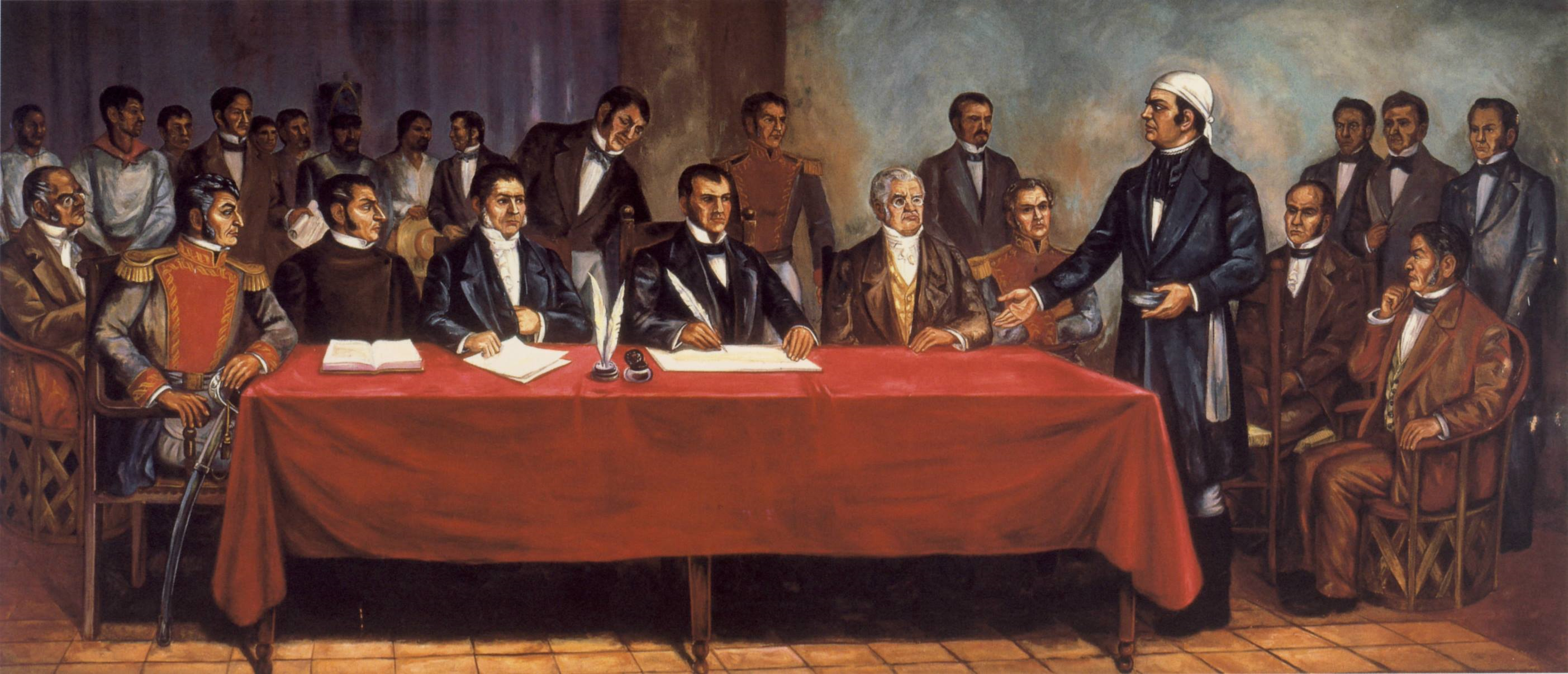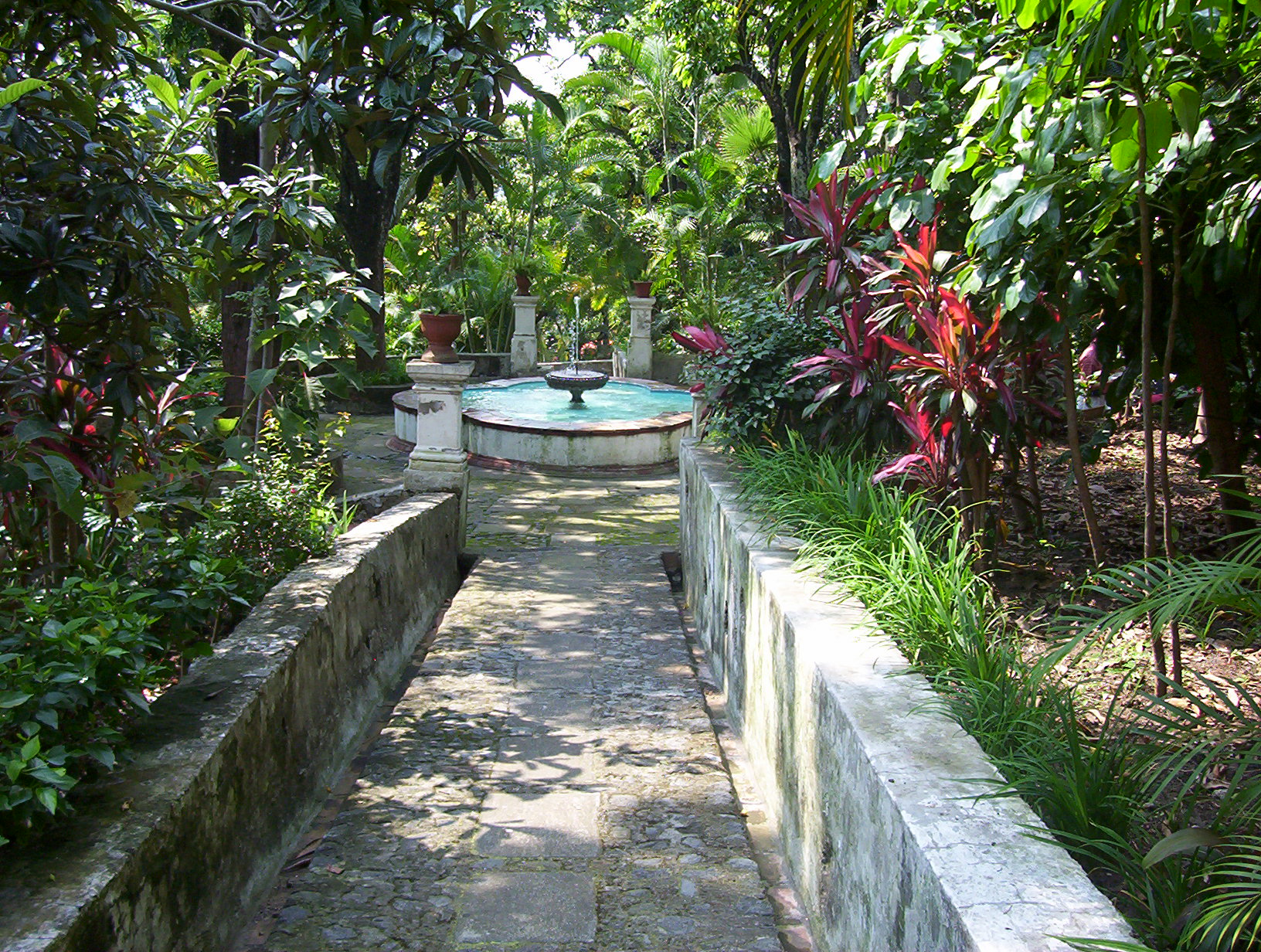|
Cuetlajuchitlán
Cuetlajuchitlán is a Mesoamerican archaeological site located 3 kilometers southeast of Paso Morelos, in the northeast of the Mexican state of Guerrero. It was discovered in 1991 during construction work for the highway from Cuernavaca to Acapulco, which now crosses under the site 50 meters below, through the Los Querendes tunnel. This site was one of the main pre-Hispanic population centers in this region during the late preclassical, of groups deriving from the Mezcala culture, in the large settlements of the Rio Balsas. Its development occurred from 800 BCE to 300 CE, with relevance to archaeology of the Guerrero state, due to its antiquity and functional architectural style, primarily for the storage and drainage systems, as well as the construction of stone columns. Toponymy Paso Morelos was formerly known as Cuetlajuchitlán or Cuetlajuchi. The word Cuetlajuchitlán formerly given to the original population, and now used for the archaeological site, is a Nahuatl word tha ... [...More Info...] [...Related Items...] OR: [Wikipedia] [Google] [Baidu] |
Mexican Federal Highway 95D
Federal Highway 95D is a toll highway connecting Mexico City to Acapulco, Guerrero. Highway 95D is among the most important toll roads in the country, serving as a backbone for traffic out of Mexico City toward Morelos and tourist destinations in Guerrero. Three segments, from north to south, comprise Federal Highway 95: the segment between Mexico City and Cuernavaca, the segment from Cuernavaca to Acapulco (commonly known as the Autopista del Sol or Sun Highway), and the Maxitúnel Interurbano Acapulco, separated from the other two segments and offering a bypass under local traffic in Acapulco. México–Cuernavaca The first and oldest segment of Highway 95D is that running between Mexico City and Cuernavaca, which was the second toll road in the country. The original construction of the highway was performed by Compañía Constructora del Sur, S.A. de C.V., a state-controlled predecessor to Caminos y Puentes Federales, the government agency that maintains the México–Cuernava ... [...More Info...] [...Related Items...] OR: [Wikipedia] [Google] [Baidu] |
Mezcala Culture
The Mezcala culture (sometimes referred to as the Balsas culture) is the name given to a Mesoamerican culture that was based in the Guerrero state of southwestern Mexico,Coe and Koontz 1962, 2002, p.55. in the upper Balsas River region.López Austin and López Luján 2001, p.88. The culture is poorly understood but is believed to have developed during the Middle and Late Preclassic periods of Mesoamerican chronology, between 700 and 200 BC. The culture continued into the Classic period (c.250-650 AD) when it coexisted with the great metropolis of Teotihuacan.Matos Moctezuma 2002c, p.465. Archaeologists have studied the culture through limited controlled excavations, the examination of looted artifacts, and the study of Mezcala sculptures found as dedicatory offerings at the Aztec complex of Tenochtitlan. Archaeological excavations The Mezcala cultural region has been heavily looted by the local population, as these items have proven desirable on the art market. In terms of ... [...More Info...] [...Related Items...] OR: [Wikipedia] [Google] [Baidu] |
Chilpancingo
Chilpancingo de los Bravo (commonly shortened to Chilpancingo; ; Nahuatl: Chilpantsinko) is the capital and second-largest city of the state of Guerrero, Mexico. In 2010 it had a population of 187,251 people. The municipality has an area of in the south-central part of the state, situated in the Sierra Madre del Sur mountains, on the bank of the ''Huacapa River''. The city is on Mexican Federal Highway 95 which connects Acapulco to Mexico City. It is served by Chilpancingo National Airport, which is one of the five airports in the state. History In pre-Columbian times, the area was occupied by the Olmecs, who built an extensive tunnel network through the mountains, and left the cave paintings in the caverns of Juxtlahuaca. The city of Chilpancingo was founded on November 1, 1591, by the Spanish conquistadores, its name meaning “Place of Wasps” in Nahuatl. During the War of Independence, Chilpancingo was crucial to the insurgent cause as its population participated actively ... [...More Info...] [...Related Items...] OR: [Wikipedia] [Google] [Baidu] |
Guerrero
Guerrero is one of the 32 states that comprise the 32 Federal Entities of Mexico. It is divided in 81 municipalities and its capital city is Chilpancingo and its largest city is Acapulcocopied from article, GuerreroAs of 2020, Guerrero the population was recorded that 3,540,685 people who live there. The international sales of their production has gone up, production like fresh mangoes, figs, coconuts, pineapple, avocado, and so much more produce. These sales have really helped Guerrero's economy. These productions have also helped In addition to the capital city, the state's largest cities include Acapulco, Petatlán, Ciudad Altamirano, Taxco, Iguala, Ixtapa, Zihuatanejo, anSanto Domingo Today, it is home to a number of indigenous communities, including the Nahuas, Mixtecs, Tlapanecs, Amuzgos, and formerly Cuitlatecscopied from article, GuerreroMost of the production is from the local farmers all over the cities of Guerrero, Chilpancingo, Iguala. A good portion of Guerrero' ... [...More Info...] [...Related Items...] OR: [Wikipedia] [Google] [Baidu] |
Paso Morelos
Paso or PASO may refer to: People * Fernando del Paso (born 1935), Mexican novelist * Juan José Paso, (1758–1833), Argentine politician Other uses * Paso (float), an elaborate float made for religious processions * Paso (theatre), a seventeenth-century Spanish one-act comic scene * Peruvian Paso, a breed of light saddle horse * Paso Fino, a naturally-gaited light horse breed * Paso, a Spanish customary unit of length * Paso, replaced by the longyi, traditional Burmese clothing * "Paso (The Nini Anthem)", a 2012 song by Sak Noel * Ducati Paso, a motorcycle * Pacific Aviation Safety Office (PASO), an intergovernmental civil aviation authority * Pan American Sports Organization (PASO), an international organization * Pannonia Allstars Ska Orchestra (PASO), a Hungarian band * ''Primarias Abiertas Simultáneas y Obligatoria (PASO)'', a blanket primary system used in Argentina * Seldovia Airport, Alaska, U.S., (ICAO airport code PASO) See also * El Paso (other) * Passo ... [...More Info...] [...Related Items...] OR: [Wikipedia] [Google] [Baidu] |
Teopantecuanitlán
Teopantecuanitlan is an archaeological site in the Mexican state of Guerrero that represents an unexpectedly early development of complex society for the region. The site dates to the Early to Middle Formative Periods, with the archaeological evidence indicating that some kind of connection existed between Teopantecuanitlan and the Olmec heartland of the Gulf Coast. Prior to the discovery of Teopantecuanitlan in the early 1980s, little was known about the region's sociocultural development and organization during the Formative period. Location Teopantecuanitlan is located in the state of Guerrero, about 20 km in the southwesterly direction from the town of Copalillo. The nearest village is Tlalcozotitlan. It is situated at the convergence of the Amacuzac and Balsas rivers, and five miles (8 km) from where the Amacuzac flows into the Mezcala River, providing an environment for trade and travel. Teopantecuanitlan occupies some 1.6 to 2 km² (500 acres), and is si ... [...More Info...] [...Related Items...] OR: [Wikipedia] [Google] [Baidu] |
Copalillo
Copalillo is a city and seat of the municipality of Copalillo, in the state of Guerrero, south-western Mexico. Instituto Nacional de Estadística y Geografía. Principales resultados por localidad 2005 (ITER). Retrieved on December 23, 2008 References {{Guerrero Populated places in Guerrero ... [...More Info...] [...Related Items...] OR: [Wikipedia] [Google] [Baidu] |
Xochipala
Xochipala is a minor archaeological site in the Mexican state of Guerrero, whose name has become attached, somewhat erroneously, to a style of Formative Period figurines and pottery from 1500 to 200 BCE. The archaeological site belongs to the Classic and Postclassic eras, approximately 200–1400 CE. Archaeological site The Organera Xochipala archaeological zone takes its name from the nearby village of Xoxhipala and the local organ pipe cactus. The archaeological site belongs to the Classic and, most importantly, the Postclassic eras, from 200 to 1400 CE. In the mid-20th century this site, representative of the Mezcala culture, was extensively looted of an estimated 20,000 pieces. Most of the sculptural artifacts have been studied as looted pieces appearing in art collections. The area is known for its Xochipala-style figurines and stone bowls, which have been dated to the Formative (or Preclassic) Period 1500 to 200 BCE. The site is particularly notable for the d ... [...More Info...] [...Related Items...] OR: [Wikipedia] [Google] [Baidu] |
Huamuxtitlán
Huamuxtitlán is a city and seat of the municipality of Huamuxtitlán, in the state of Guerrero, south-western Mexico Mexico (Spanish: México), officially the United Mexican States, is a country in the southern portion of North America. It is bordered to the north by the United States; to the south and west by the Pacific Ocean; to the southeast by Guatema .... Instituto Nacional de Estadística y Geografía. Principales resultados por localidad 2005 (ITER). Retrieved on December 23, 2008 References Populated places in Guerrero {{Guerrero-geo-stub ... [...More Info...] [...Related Items...] OR: [Wikipedia] [Google] [Baidu] |
Huitzuco De Los Figueroa
Huitzuco de los Figueroa is one of the 81 municipalities of Guerrero, in south-western Mexico Mexico (Spanish: México), officially the United Mexican States, is a country in the southern portion of North America. It is bordered to the north by the United States; to the south and west by the Pacific Ocean; to the southeast by Guatema .... The municipal seat lies at Huitzuco. The municipality covers an area of 921.9 km². As of 2005, the municipality had a total population of 35,055. References Municipalities of Guerrero {{Guerrero-geo-stub ... [...More Info...] [...Related Items...] OR: [Wikipedia] [Google] [Baidu] |
Los Tepoltzis
LOS, or Los, or LoS may refer to: Science and technology * Length of stay, the duration of a single episode of hospitalisation * Level of service, a measure used by traffic engineers * Level of significance, a measure of statistical significance * Line-of-sight (other) * LineageOS, a free and open-source operating system for smartphones and tablet computers * Loss of signal ** Fading **End of pass (spaceflight) * Loss of significance, undesirable effect in calculations using floating-point arithmetic Medicine and biology * Lipooligosaccharide, a bacterial lipopolysaccharide with a low-molecular-weight * Lower oesophageal sphincter Arts and entertainment * ''The Land of Stories'', a series of children's novels by Chris Colfer * Los, or the Crimson King, a character in Stephen King's novels * Los (band), a British indie rock band from 2008 to 2011 * Los (Blake), a character in William Blake's poetry * Los (rapper) (born 1982), stage name of American rapper Carlos Col ... [...More Info...] [...Related Items...] OR: [Wikipedia] [Google] [Baidu] |
Cuernavaca
Cuernavaca (; nci-IPA, Cuauhnāhuac, kʷawˈnaːwak "near the woods", ) is the capital and largest city of the state of Morelos in Mexico. The city is located around a 90-minute drive south of Mexico City using the Federal Highway 95D. The name ''Cuernavaca'' is a euphonism derived from the Nahuatl toponym and means 'surrounded by or close to trees'. The name was Hispanicized to ''Cuernavaca''; Hernán Cortés called it ''Coadnabaced'' in his letters to Charles V, Holy Roman Emperor, and Bernal Díaz del Castillo used the name ''Cuautlavaca'' in his chronicles. The coat-of-arms of the municipality is based on the pre-Columbian pictograph emblem of the city which depicts a tree trunk () with three branches, with foliage, and four roots colored red. There is a cut in the trunk in the form of a mouth, from which emerges a speech scroll, probably representing the language Nahuatl and by extension the locative suffix , meaning 'near'. Cuernavaca has long been a favorite escape fo ... [...More Info...] [...Related Items...] OR: [Wikipedia] [Google] [Baidu] |



